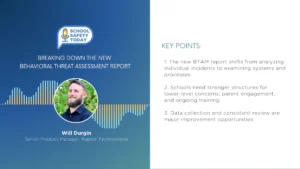Harnessing the AI Revolution For Businesses Means Balancing Risks, Rewards, and Ethical Considerations
High risks, high rewards – an ideal mantra businesses should adopt as they navigate the AI revolution, which is rapidly accelerating and bringing both challenges and benefits in its wake. The rapid advancements in AI technology, including groundbreaking tools like OpenAI’s ChatGPT and Google’s text-to-video AI, have opened up a world of possibilities for businesses to harness. But are firms effectively prepared to navigate the AI revolution for businesses? Will they be able to reap the benefits while overcoming the potential pitfalls?
As companies embrace the AI revolution for businesses, they stand to gain significantly in terms of efficiency, cost savings, and new revenue streams. For example, innovative chatbots are poised to evolve into versatile tools that merge language and image manipulation, offering users a more engaging and interactive experience. Yet, the rapid growth of this technology also brings forth challenges, such as discerning truth from falsehood and tackling biases ingrained in AI models.
With this in mind, it is crucial for companies looking to capitalize on AI’s potential to focus on smoothly integrating AI systems into their existing workflows, commit to employee training, and stay up-to-date with the latest advancements in the field.
Can businesses truly unlock the full potential of AI without risking their credibility? Rebecca Wettemann, the CEO of technology advisory firm Valoir, believes the timing couldn’t be more crucial for businesses to harness the technology effectively – and emphasizes the importance of trust, ethics, and transparency in AI implementation.
Rebecca’s Thoughts:
“I’ve been following artificial intelligence and automation as an analyst for a long time. The difference today, as ChatGPT’s buzz has certainly shown us, is that it’s moved out of the hands of data scientists into the hands of business users. Anyone who can type can leverage the power of AI.
We’ll see more and more embedded AI and business applications moving forward. The potential benefit for business in terms of productivity is huge, but so are the potential risks. Just like any technology, AI can be used for good things and bad things. Trust will be a big factor moving forward.
Understanding the ethics and data use model training and transparency when AI is used will be big topics in the coming months and years. Business leaders need to keep telling themselves that this is just technology. Its successful application will depend on the humans who make decisions around it.
If we think back to when the email came out, we got great benefits in terms of productivity and efficiency, but we also got spam, phishing and people that always replied to all. AI’s Productivity potential is exponentially that of email, but so are its risks. Well, AI job disruption will create some HR challenges. Ironically, HR is an area where AI can really help with identifying coaching opportunities for employees, matching workers with collaborators and mentors who can help them learn new skills and helping employees navigate the disruption that AI will definitely produce in job roles and activities.
Key to effective adoption for businesses is going to be building trust, giving users insights about where the data driving any recommendations is coming from, helping them to compare AI-driven results versus their own, and having clear and transparent policies around data use will be really important.
There are significant potential benefits for AI when we think about applications in areas like customer relationship management, whether it’s sales, service or marketing.
AI can help tune and develop content for specific audiences, automate email responses or update knowledge bases with relevant service information. We’ve already seen CRM vendors start to innovate in these areas; the important thing to remember is that AI is like an enthusiastic but ignorant intern. There’s going to be always a need for adult correction, direction and oversight.”









